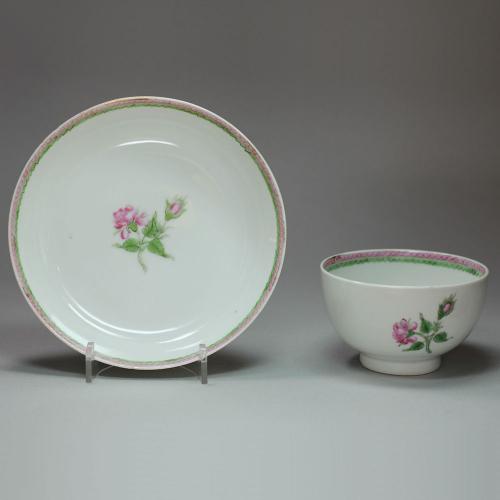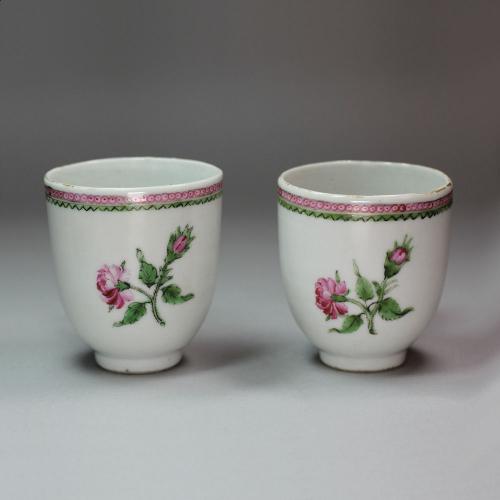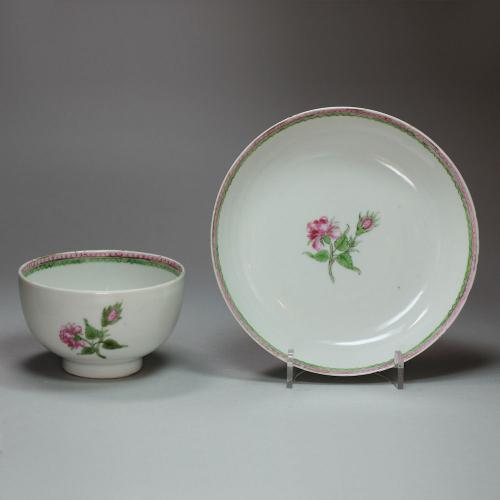
Price on application
This object is eligible for a Certificate of BADA Provenance
The BADA Standard
- Since 1918, BADA has been the leading association for the antiques and fine art trade
- Members are elected for their knowledge, integrity and quality of stock
- Our clients are protected by BADA’s code of conduct
- Our dealers’ membership is reviewed and renewed annually
- Bada.org is a non-profit site: clients deal directly with members and they pay no hidden fees
A Chinese blanc de chine figure of Guanyin. The figure dates from the Kangxi period or possibly earlier.
Guanyin is depicted seated upon a rock in a variation of the lalitasana mudra, also known as the royal position. The figure is carrying a scroll in her right hand.
The lalitasana pose originated in Indian art and is used to emphasise the regal nature of kings and queens. It is typical in Buddhist sculpture and quickly became adopted in China with the spread of Buddhist teachings.
Guanyin originates from India, where she is known as Avalokitesvara. She represents the mortal Buddha of compassion and mercy.
Buddhism probably arrived in China with travelling monks in the first century BC and was widely adopted. Buddhist figures such as Avalokitesvara were eventually transformed into the Chinese deity Guanyin over the course of centuries.
This particular example was made at the Dehua kilns which are located in the South Eastern Chinese coastal province of Fujian. The kilns are renowned for their creamy-white, translucent porcelain.
Due to the raw materials available in the local area, Dehua porcelain contains high levels of pure china stone. This results in a very hard and sugary body which is particularly suited to the production of moulded figures.
康熙或更早的觀音中國白人,坐在一塊岩石上,穿著拉利塔薩納手印(皇家職位)的變體,她裸露的左腳在飄逸的長袍下擺清晰可見,右手拿著捲軸,脖子上掛著念珠,頭髮高高的披著罩子, 耳朵上纏繞著捲髮
尺寸:
高:21.5釐米。
條件:
恢復到手中
筆記:
lalitasana姿勢起源於印度藝術,用於強調國王和王后的富麗堂皇的性質。它是佛教雕塑中的典型代表,並隨著佛教教義的傳播而迅速在中國被採用。觀世音也起源於印度,在那裡她被稱為觀世音菩薩,代表慈悲和慈悲的凡人佛陀。佛教可能在西元前一世紀隨著旅行僧侶到達中國並被廣泛採用,幾個世紀以來,觀世音菩薩等佛教人物被轉變為中國神觀世音。這個例子是在東南沿海省份福建的德化窯上製作的,該窯以其乳白色的半透明瓷而聞名。由於當地有原料,德化瓷器含有高水準的純瓷石,因此身體非常堅硬,含糖量特別適合製作模塑人物。
起源:
來自一個貴族英國家庭,1921年之前
Dimensions
height: 21.5cm.Condition report
Restoration to handsStock number
W430The BADA Standard
- Since 1918, BADA has been the leading association for the antiques and fine art trade
- Members are elected for their knowledge, integrity and quality of stock
- Our clients are protected by BADA’s code of conduct
- Our dealers’ membership is reviewed and renewed annually
- Bada.org is a non-profit site: clients deal directly with members and they pay no hidden fees




